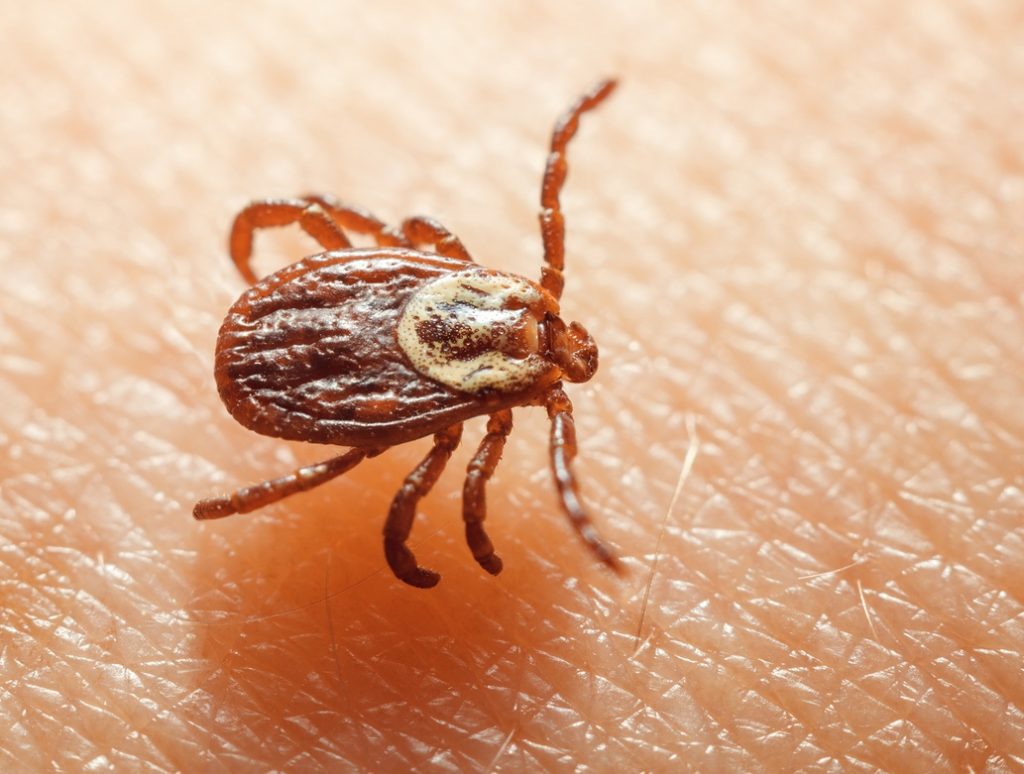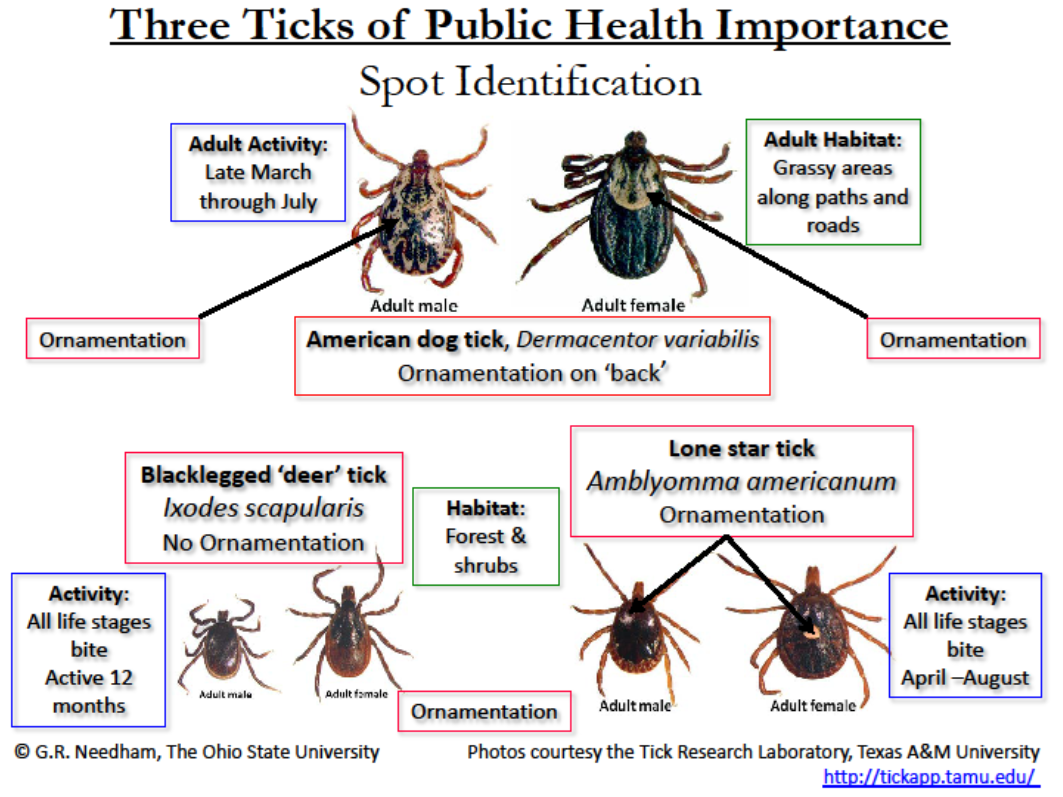| 1 | ||
|---|---|---|
Program Contact |
||
| Joe Lynch MPH, REHS Program Manager 216.201.2000 ext 1241 jlynch@ccbh.net |
|
|
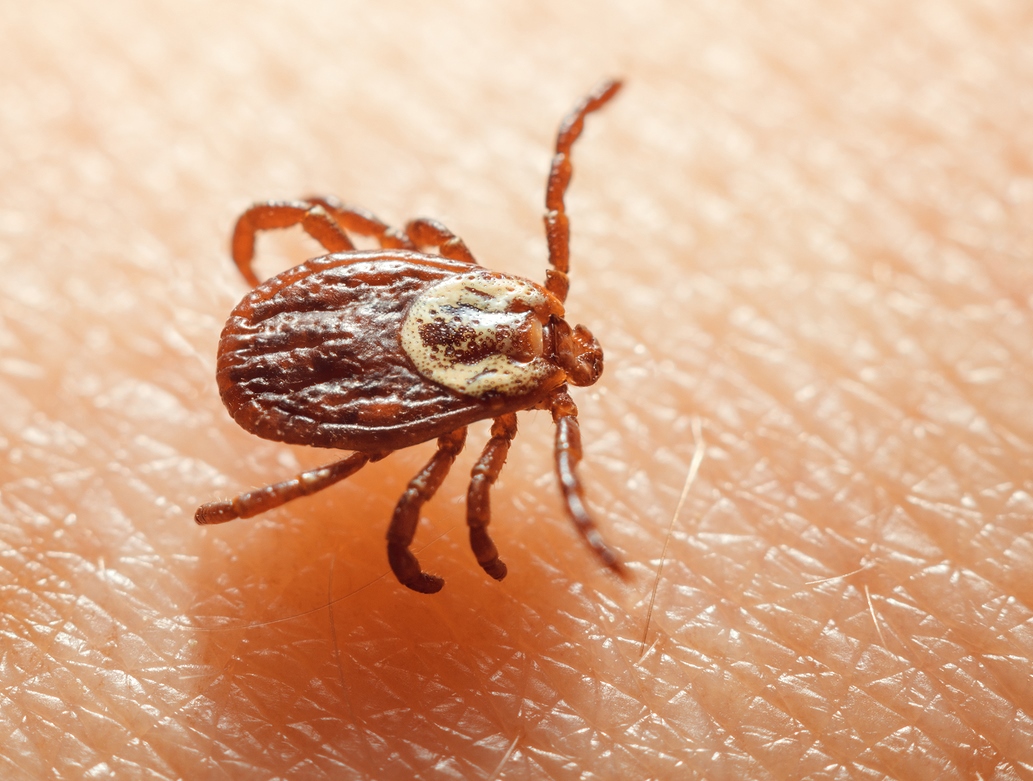
The incidence of tickborne disease is on the rise in Ohio. Although there are approximately 12 different tick species that have been identified in Ohio, only a small number have been linked to disease transmission.
Three species are responsible for nearly all tickborne diseases reported in Ohio – the American dog tick, the Blacklegged tick and the Lone Star tick.
The American Dog Tick, most prevalent in the Eastern half of the United States and the West Coast, is responsible for the transmission of Rocky Mountain Spotted Fever (RMSF) .
Dogs, rodents, and other animals typically harbor the agent. In 80% of the cases, reddish-purple spots appear on the extremities and spread to the trunk, neck, and face. The American Dog Tick is not known to transmit Lyme Disease.

The adult Blacklegged Tick, formerly called the Deer Tick, is approximately 1/2 the size of a dog tick and is responsible for the transmission of Lyme Disease in the eastern United States. The preferred habitat for these ticks is woodlands.
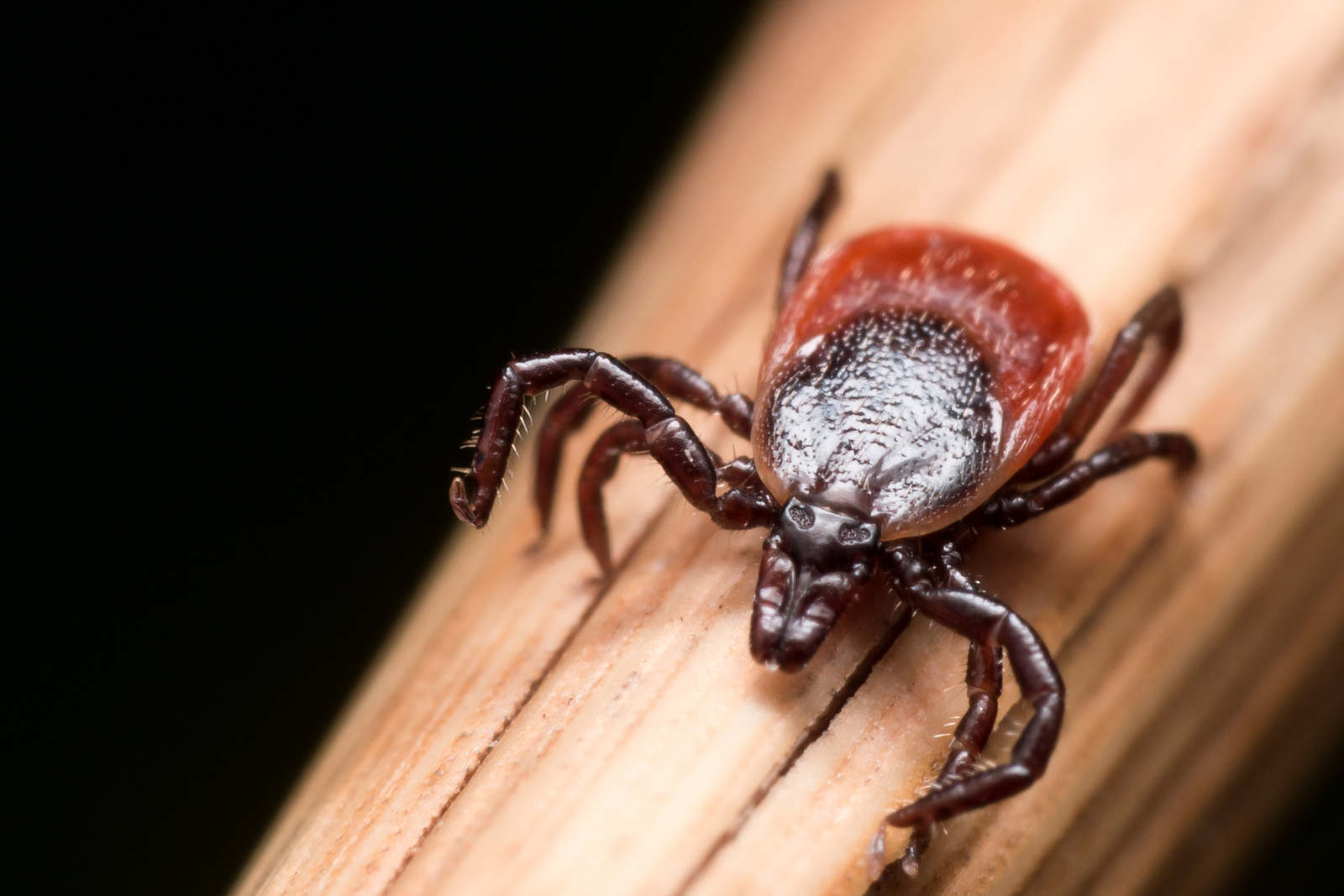
Some early symptoms of Lyme Disease include a bulls-eye rash, fatigue, headache, and muscle stiffness. The severity of Lyme Disease symptoms varies greatly with the individual. Some patients develop only the rash, while a few experience recurrent, crippling arthritis. Still others may be bedridden with fatigue for long periods of time.
The Lone Star tick is responsible for transmitting ehrlichiosis in Ohio. It is a very aggressive tick typically found more commonly in the southern half of the state.
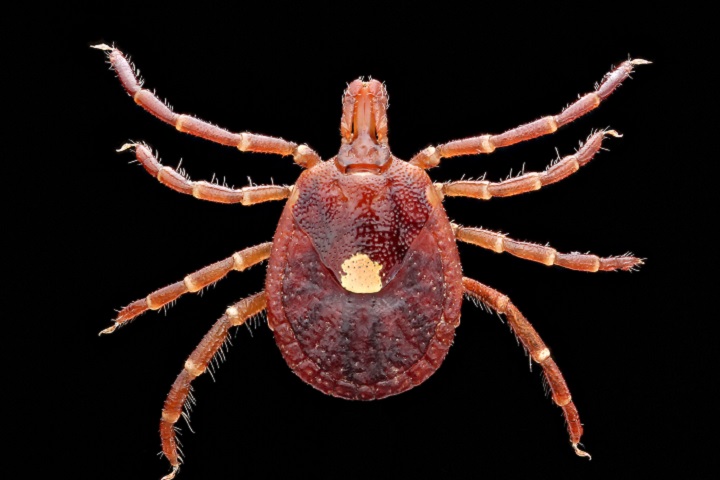
The organisms which cause illness are transmitted in the saliva of the tick while it is feeding (24 hours). The long period between attachment and commencement of feeding is important to the prevention of infection.
Early detection and prompt removal of the tick will help to prevent infection. There is no guarantee that a tick, even if infected, will transmit a disease.
Things to Remember
Simple guidelines to prevent tick bites:
- Check your pets daily before they enter the house for the night. Purchase tick collars for pets and change them every three months.
- Remove piles of leaf litter, clear brush from around your house, and keep the grass mowed.
- Dress in light colored, long-sleeved garments. Spray insect repellent containing DEET on clothes and on exposed skin other than the face. Treat clothes (especially pants, socks, and shoes) with PERMETHRIN, which kills ticks on contact.
- When walking through brush, tuck pant legs into boots or socks and stay in the middle of the path to avoid contact with plants.
To remove a tick:
- Grasp the tick firmly by the head and as close to the skin as possible with tweezers. Hold the tweezers parallel to the skin to grasp the head. Gently pull the tick out until it releases its hold.
- Wash the site of the bite with soap and water and then apply an antiseptic.
- If a rash or flu-like symptoms develop following a tick bite, consult a physician immediately. Diagnosis for tick borne diseases is through clinical symptoms and blood testing.
- Save the tick. Contact CCBH to discuss tick identification.
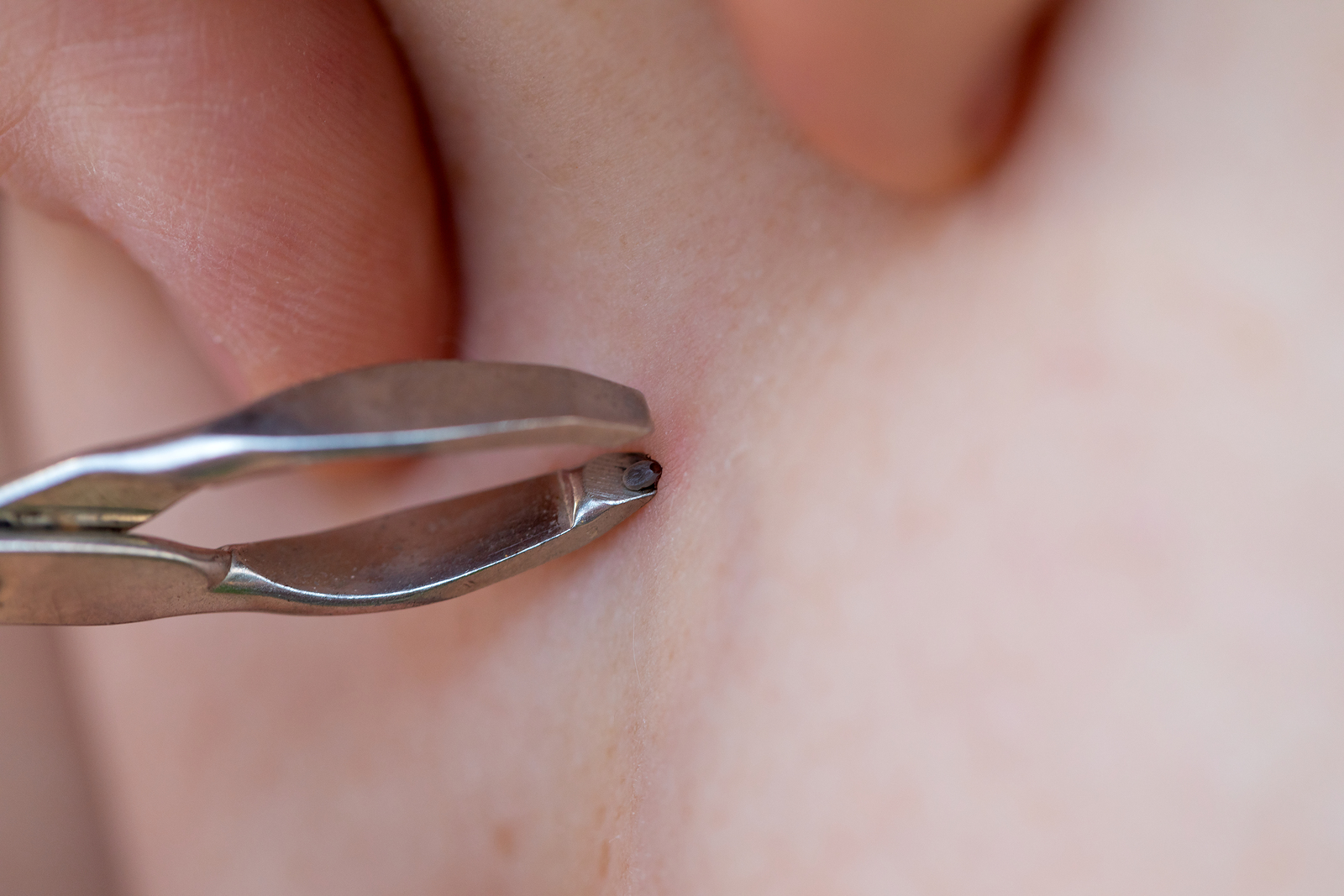
Some people are interested in having ticks that they removed from themselves or loved ones tested for various tickborne diseases. The Ohio Department of Health does not recommend tick testing under these circumstances for the following reasons:
- You may not have been infected. Even if a tick is infected and tests positive, it may not have transmitted the infection to you.
- It might delay treatment. Tick test results take several days and may not be available in time to make a prompt healthcare decision.
- You may have other tick bites that you don’t know about. Most people who are infected with tickborne diseases do not recall a tick bite. Therefore, if someone were to develop symptoms of tickborne disease, there would be no way to know whether the infection was from a known tick bite or another unknown tick bite. For example, if a tick is tested and the result is negative, you could still have been bitten by another infected tick, not know it, and develop symptoms of tickborne disease.
- Tests performed on ticks are not always perfect. All laboratory tests have the possibility of false positive or false negative results. Even with a negative result, people should still monitor themselves for the appearance of a rash, fever and other flu-like symptoms. If any of these symptoms occur, you should contact your healthcare provider.
Some private laboratories offer tick testing, but the Ohio Department of Health does not collect ticks from the public and test them for tickborne diseases.
Tick Resources
What to Do if You Find a Tick on You – CDC
2019 Memo to Medical Providers – Annual Update on Diagnosis and Surveillance for Tickborne Diseases
Tickborne Diseases in Ohio – Ohio Department of Health
Ticks of Public Health Importance
Ohio Department of Health Zoonotic Disease Program
Videos
How Ticks Attach To and Feed on Humans (Video)
How Ticks Transmit Lyme Disease (Video)
How to Properly Check for Ticks (Video)
Proper Removal of a Tick (Video)




